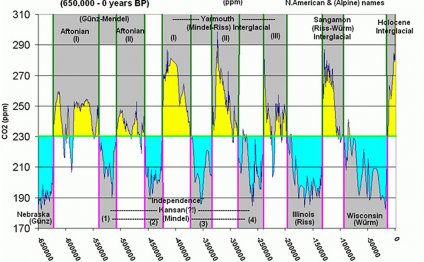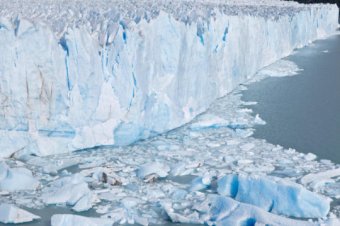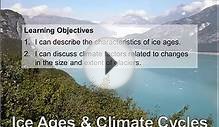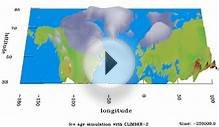
Ice Age Cycles
 Glacier Perito Moreno nationwide Park, Argentina Patagonia.
Glacier Perito Moreno nationwide Park, Argentina Patagonia.
Credit: iStockphoto
Science has actually struggled to explain completely the reason why an ice age happens every 100, 000 years. As researchers today illustrate based on a computer simulation, not just do variations in insolation play an integral part, but also the shared influence of glaciated continents and weather.
Ice many years and hot durations have actually alternated relatively frequently in Earth's history: Earth's climate cools about every 100, 000 many years, with vast aspects of North America, Europe and Asia becoming buried under thick ice sheets. Fundamentally, the pendulum swings right back: it gets hotter and ice public melt. While geologists and environment physicists found solid evidence of this 100, 000-year period in glacial moraines, marine sediments and arctic ice, up to now these were incapable of find a plausible description for this.
Using computer system simulations, a Japanese, Swiss and US staff including Heinz Blatter, an emeritus professor of real climatology at ETH Zurich, has now managed to demonstrate the ice-age/warm-period interchange depends heavily in the alternating impact of continental ice sheets and environment.
"If an entire continent is covered in a layer of ice this is certainly 2, 000 to 3, 000 metres dense, the geography is totally different, " says Blatter, describing this comments impact. "This and various albedo of glacial ice in comparison to ice-free earth induce considerable alterations in the surface temperature additionally the environment blood circulation in the atmosphere." Moreover, large-scale glaciation additionally alters the sea level and therefore the ocean currents, which also impacts the environment.
Weak effect with a very good influence
As the experts from Tokyo University, ETH Zurich and Columbia University demonstrated inside their paper posted in log Nature, these feedback results between world and also the climate take place over other understood mechanisms. It's for ages been clear your weather is considerably impacted by insolation on long-lasting time machines. Because world's rotation and its own orbit across the sun occasionally change somewhat, the insolation in addition varies. If you examine this difference in detail, various overlapping cycles of approximately 20, 000, 40, 000 and 100, 000 many years are recognisable.
Given the proven fact that the 100, 000-year insolation period is relatively weak, researchers could not easily give an explanation for prominent 100, 000-year-cycle associated with ice centuries with this specific information alone. With the feedback impacts, however, that is today possible.
Simulating the ice and environment
The scientists received their particular results from a thorough computer system design, where they combined an ice-sheet simulation with an existing environment design, which enabled them to calculate the glaciation of this northern hemisphere for the past 400, 000 many years. The design not merely takes the astronomical parameter values, floor geography additionally the real circulation properties of glacial ice under consideration but also especially the weather and comments effects. "it is the first time the glaciation of the whole northern hemisphere has been simulated with a climate model that includes most of the significant aspects, " states Blatter.
Utilizing the design, the scientists were in addition able to explain why ice ages constantly start slowly and end fairly quickly. The ice-age ice masses accumulate over tens and thousands of many years and recede within the area of a few thousand years. Now we understand the reason why: it is not just the surface heat and precipitation that determine whether an ice sheet grows or shrinks. As a result of aforementioned comments impacts, its fate also depends upon its size. "the bigger the ice-sheet, the colder the weather needs to be to preserve it, " says Blatter. When it comes to smaller continental ice sheets being however developing, durations with a warmer climate tend to be less likely to melt all of them. It really is a different sort of story with a large ice-sheet that stretches into lower geographic latitudes: a comparatively brief hot spell of a few thousand many years can be adequate to cause an ice sheet to melt and herald the end of an ice age.
The Milankovitch rounds
The explanation for the cyclical alternation of ice and cozy periods stems from Serbian mathematician Milutin Milankovitch (1879-1958), just who calculated the alterations in Earth's orbit and the resulting insolation on Earth, therefore getting the first ever to explain the cyclical changes in insolation are the result of an overlapping of a whole series of cycles: the tilt of Earth's axis varies by around two levels in a 41, 000-year pattern. Furthermore, world's axis gyrates in a cycle of 26, 000 many years, much like a spinning top. Eventually, Earth's elliptical orbit all over sunlight alterations in a cycle of approximately 100, 000 many years in two respects: in the one-hand, it changes from a weaker elliptical (circular) type into a stronger one. On the other hand, the axis of this ellipsis turns in jet of Earth's orbit. The spinning of Earth's axis therefore the elliptical rotation for the axes cause the day on which world is nearest into the sunlight (perihelion) to migrate through the season in a cycle of around 20, 000 many years: at this time, its at the start of January; in around 10, 000 many years, but will likely be at the start of July.
Predicated on their calculations, in 1941 Milankovitch postulated that insolation during summer characterises the ice and warm times at sixty-five degrees north, a concept which was denied by the technology neighborhood during their life time. From 1970s, but gradually became clearer that it essentially coincides using climate archives in marine sediments and ice cores. These days, Milankovitch's principle is commonly accepted. "Milankovitch's indisputable fact that insolation determines the ice ages was right in principle, " claims Blatter. "However, research shortly recognised that additional comments impacts into the environment system had been required to clarify ice centuries. We're now able to name and identify these impacts precisely."
YOU MIGHT ALSO LIKE



Share this Post
Related posts
Best Sports Bicycle
10. Terry saddles being praised all around the globe by racers, recreational cyclists and biking publications. Outdoors mag…
Read MoreWhy 5/3/1 Athlete Knee Sleeves?
Why Knee Sleeves There s two primary good reasons to put on knee sleeves. The very first is if you have troubles with either…
Read More











